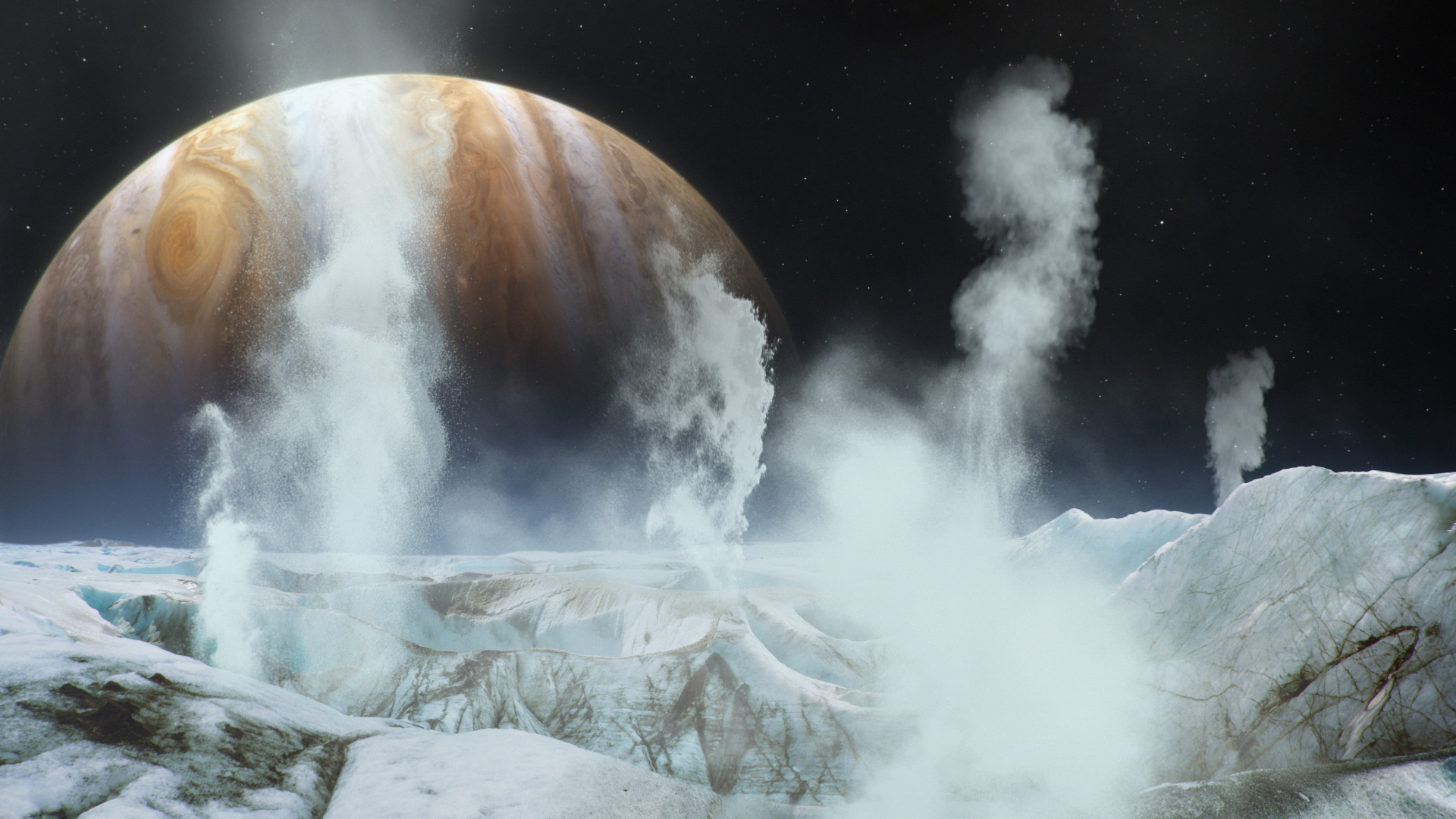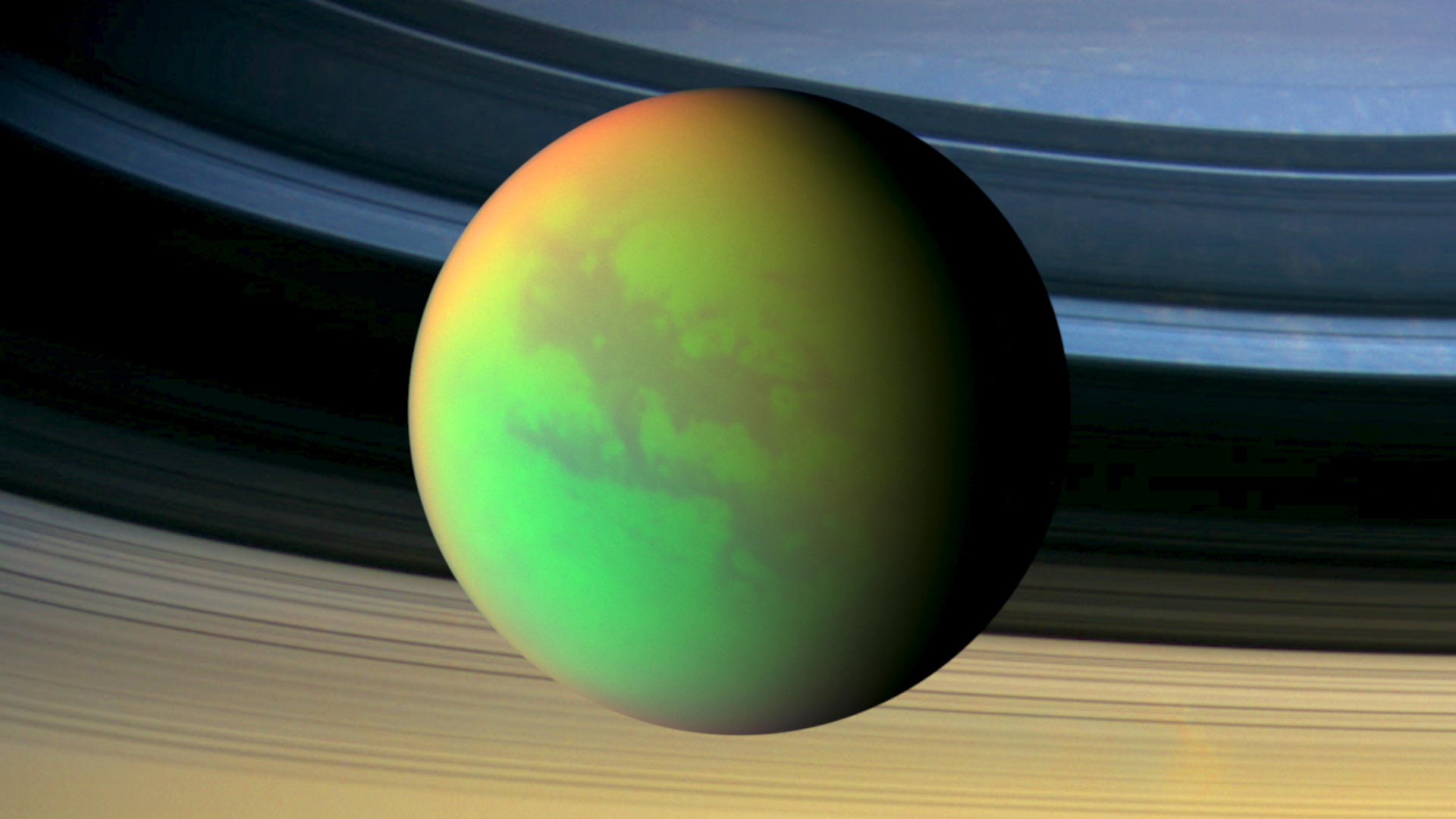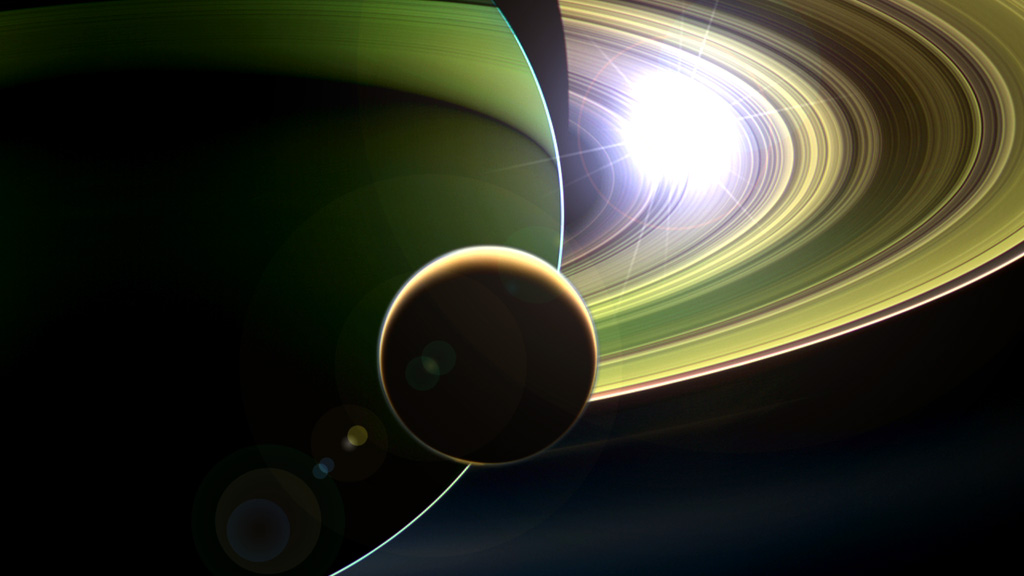Propylene on Titan
With a thick atmosphere, clouds, a rain cycle and giant lakes, Saturn's large moon Titan is a surprisingly Earthlike place. But unlike on Earth, Titan's surface is far too cold for liquid water - instead, Titan's clouds, rain, and lakes consist of liquid hydrocarbons like methane and ethane (which exist as gases here on Earth). When these hydrocarbons evaporate and encounter ultraviolet radiation in Titan's upper atmosphere, some of the molecules are broken apart and reassembled into longer hydrocarbons like ethylene and propane.
NASA's Voyager 1 spacecraft first revealed the presence of several species of atmospheric hydrocarbons when it flew by Titan in 1980, but one molecule was curiously missing - propylene, the main ingredient in plastic number 5. Now, thanks to NASA's Cassini spacecraft, scientists have detected propylene on Titan for the first time, solving a long-standing mystery about the solar system's most Earthlike moon.
NASA Planetary Scientist Conor Nixon explains his discovery of propylene on Titan, Saturn's largest moon. Scientists have known about the presence of atmospheric hydrocarbons on Titan since Voyager 1 flew by in 1980, but one molecule, propylene, was curiously missing. Now, thanks to new data from NASA's Cassini spacecraft, propylene has been detected for the first time on Titan.
For complete transcript, click here.
Watch this video on the NASAexplorer YouTube channel.
For More Information
Credits
Please give credit for this item to:
NASA's Goddard Space Flight Center
-
Animators
-
Ernie Wright
(USRA)
- Chris Meaney (HTSI)
- Chris Smith (HTSI)
- Dan Gallagher (USRA)
- John S. Howard (NASA/JPL CalTech)
-
Ernie Wright
(USRA)
-
Video editor
- Dan Gallagher (USRA)
-
Interviewee
- Conor Nixon (NASA/GSFC)
-
Producer
- Dan Gallagher (USRA)
-
Scientist
- Conor Nixon (NASA/GSFC)
-
Project support
- Aaron E. Lepsch (ADNET Systems, Inc.)
-
Videographer
- Rob Andreoli (Advocates in Manpower Management, Inc.)
-
Writer
- Elizabeth Zubritsky (ADNET Systems, Inc.)
Missions
This page is related to the following missions:Series
This page can be found in the following series:Tapes
The media on this page originally appeared on the following tapes:-
Propylene on Titan
(ID: 2013074)
Monday, September 30, 2013 at 4:00AM
Produced by - Dan Jacob (Global Science and Technology, Inc.)
Release date
This page was originally published on Monday, September 30, 2013.
This page was last updated on Monday, January 6, 2025 at 12:01 PM EST.
![NASA’s Webb Telescope has discovered a new molecule in Titan’s atmosphere – one that may have implications for the future of this surprisingly Earthlike world.Complete transcript available.Universal Production Music: “Barfuß Durch Die Stadt” by Edgar Möller [GEMA] and Lucia Wilke [GEMA]; “Into the Void” by Gage Boozan [ASCAP]; “Pulse of Progress” by Emma Zarobyan [SOCAN]; “Playing With The Narrative” by Cathleen Flynn [ASCAP] and Micah Barnes [BMI]; “Back From The Brink” by Daniel Gunnar Louis Trachtenberg [PRS]Watch this video on the James Webb Space Telescope YouTube channel.](/vis/a010000/a014800/a014843/Webb_Titan_Climate_Thumbnail.jpg)


